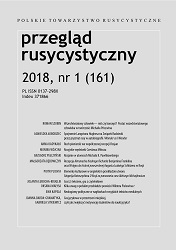
В.Л. Коровин, Книга Иова в русской поэзии XVIII — первой половины XIX века, Водолей, Москва 2017, 224 с.
Book review on В.Л. Коровин, Книга Иова в русской поэзии XVIII — первой половины XIX века, Водолей, Москва 2017, 224 с.
More...We kindly inform you that, as long as the subject affiliation of our 300.000+ articles is in progress, you might get unsufficient or no results on your third level or second level search. In this case, please broaden your search criteria.

Book review on В.Л. Коровин, Книга Иова в русской поэзии XVIII — первой половины XIX века, Водолей, Москва 2017, 224 с.
More...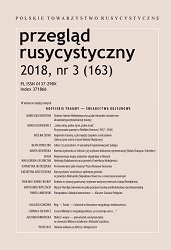
The article is devoted to the emergence of the medieval picture of the world in the Russian literature of the XI–XVII centuries. A special attention is paid to the formation of a system of literary archetypes, which then formed the basis of the Russian philosophical and artistic thought. Among them the first of the first were numinous archetypes, which characterized the most important aspect of the religious experience associated with the intense feeling of the divine presence. Numinous archetypes for centuries have defined the nature of the medieval Russian literature: the penetration into the image of God is the most ideal constant of culture and the highest point in its spiritual aspiration. Those archetypes are considered in connection with the other primeval images that make up the medieval picture of the world: God — World — Man.
More...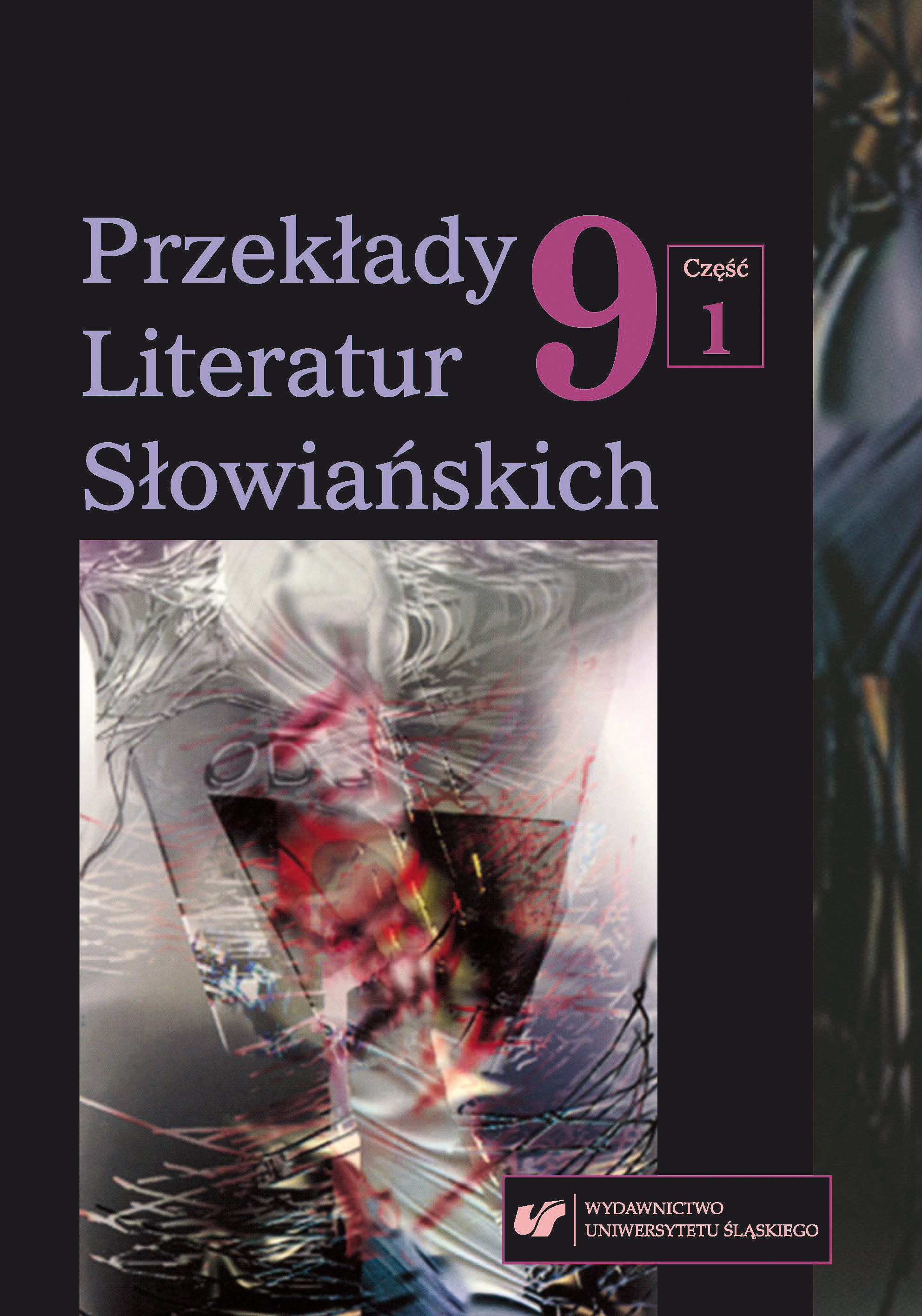
Literary works tend to be amongst the most often translated texts. A perfect example is Mikhail Bulgakov’s novel „The Master and Margarita”: over the previous two years (2016—2017) three new translations thereof into Polish appeared, one of them being a translation by Leokadia, Grzegorz, and Igor Przebinda. In this paper, the main reasons for the publication of this new, “family” translation were discussed. The question about the need for makeing new translations was accompanied by other questions: how are such texts translated what strategies are used by the translator?, to what extent does he or she take account of the assumed expectations of contemporary readers? In the presentation, two research perspectives were proposed. The first of them is the translator’s viewpoint, for whom the newly done translation is a domesticated translation. The other perspective, the researcher’s one, consist in analyzing the translated text itself, in particular with regard to the applied translation strategies (exoticization vs. adaptation), indicating the differences between the latest translation and the previous ones (first by Irena Lewandowska and Witold Dąbrowski, and second by Andrzej Drawicz). The analysis of the translated text along with the accompanying paratexts in the form of numerous footnotes leads one to a conclusion that exoticization is a dominant strategy.
More...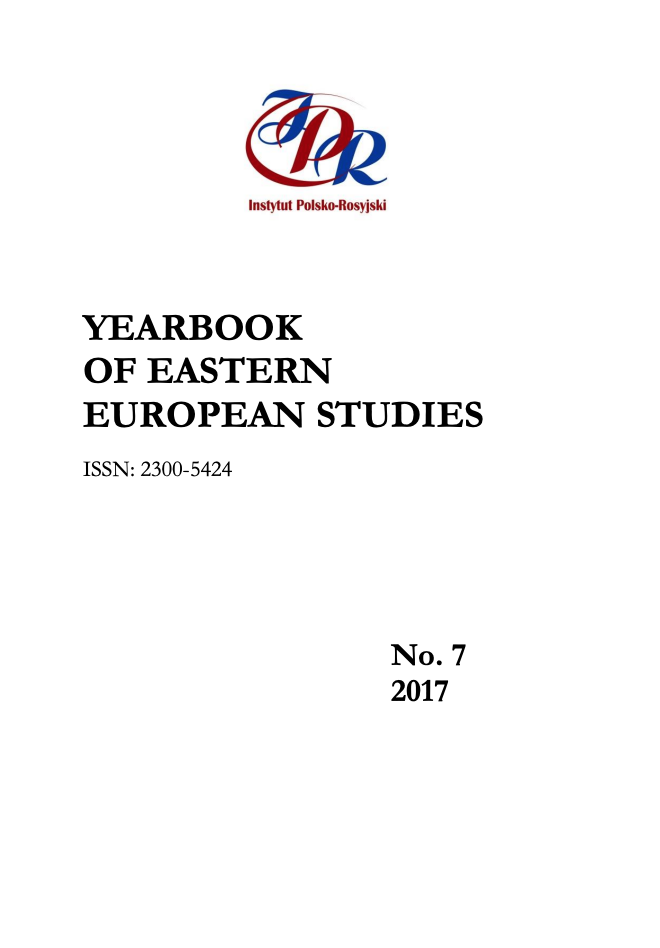
The article presents methodical program devoted to the study of romantic story of Maxim Gorky, one of the most popular Russian writers in China, «Makar Chudra» in class on Russian literature with Chinese students. A methodological approach includes questions and tasks for pre-, during- and post-textual work. The tasks and questions aimed to activation of cognitive activity, the use of language guess. This material can be used in the any other foreign language groups who speak Russian at an advanced level.
More...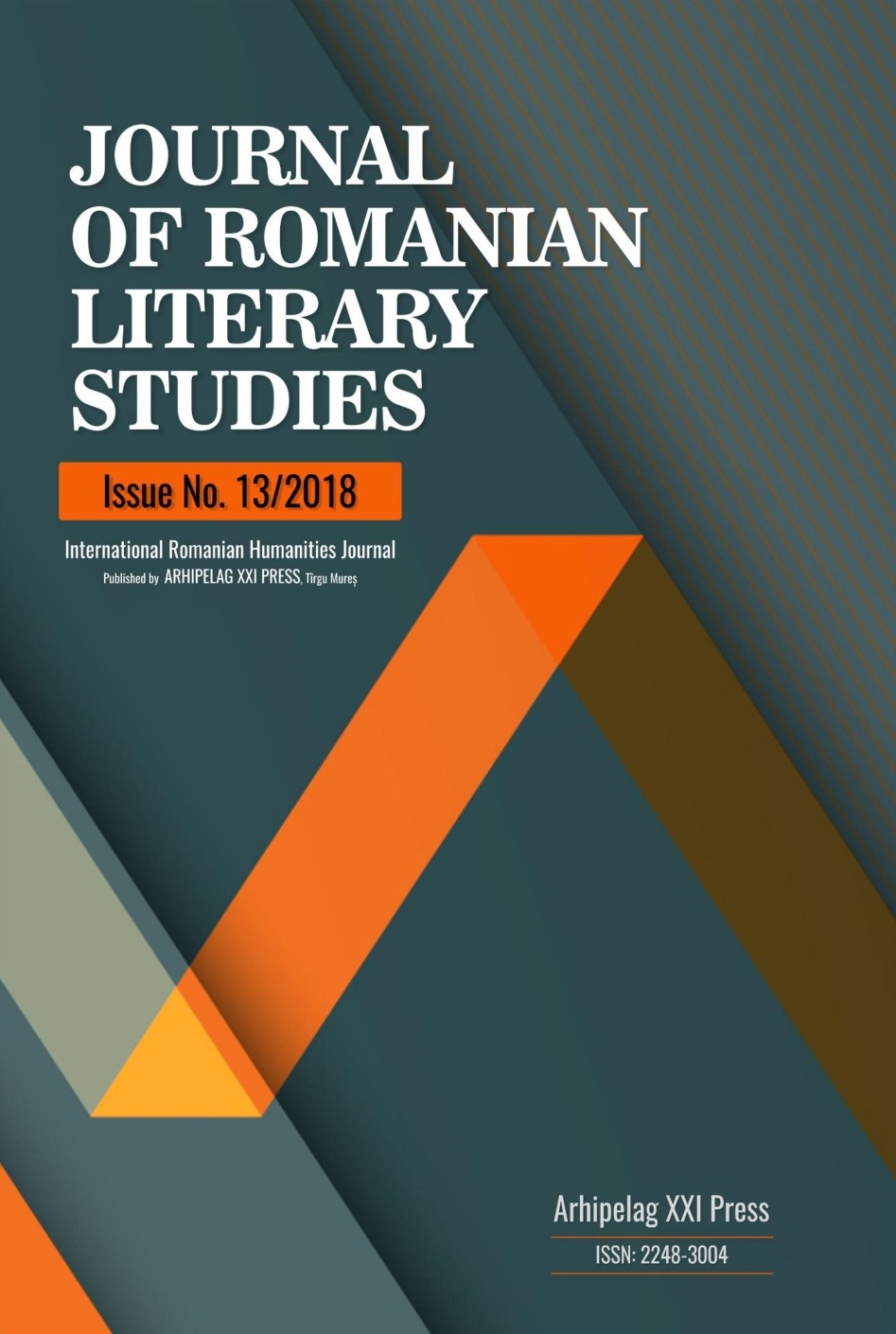
The real, empirical man's soul, is very little known, whether it is simple observations of common sense or complicated psychological theories. Even the individual himself does not know himself entirely by introspection. But there is a way of knowing by which the soul of man is fully known, without rest, and that is the prose of fiction. The author of a novel is omniscient, just as God Himself, in terms of his characters, their soul life and their destiny. And on the other hand, fictional prose is a clearer knowledge of life than other forms of knowledge, for literature is like a marvelous mirror of life. At least for these two reasons, literature is a privileged knowledge of man, especially when it comes to strong moral conflict and extreme behavioral reactions.
More...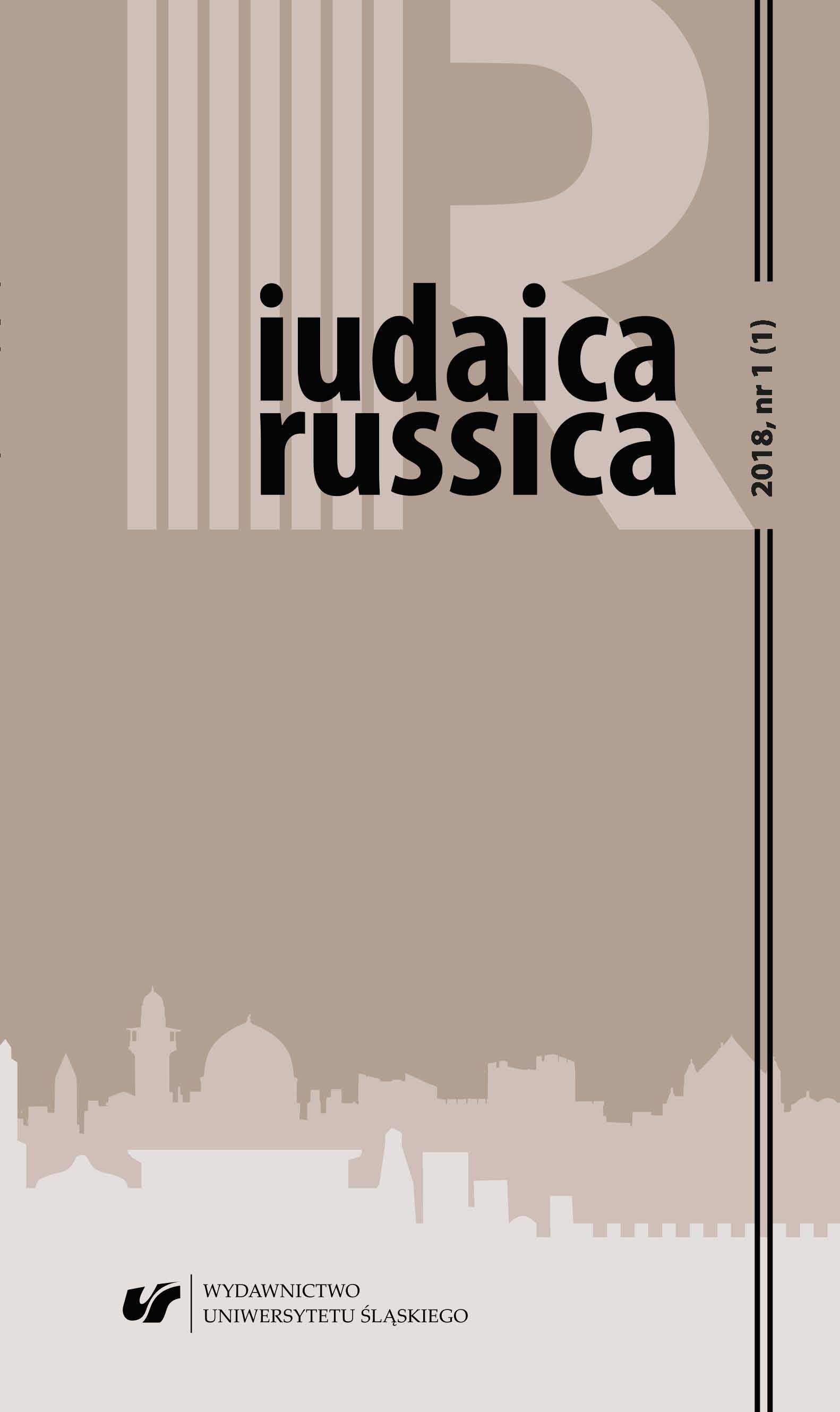
The paper is devoted to Salomon Bart (1885-1941), a poet and an emigrant, who moved to Warsaw after the October Revolution. In the 1930s, he joined Literaturnoe Sodruzhestvo, which gathered Russian intellectuals and artists in Poland. He published five volumes of poetry, focusing predominantly on death. Even during his lifetime, he was considered a peculiar poet. In October of 1940, he was transported to and held in the Warsaw Ghetto, where he died of hunger.
More...
The article is devoted to the issue of Lasik Roitschwantz’s (the main character of „The Stormy Life Of Lasik Roitschwantz” by Ilya Ehrenburg) Jewish language attributes in the Polish translation of the novel. The author of the paper pays particular attention to the analysis of particles, exclamations, conjuctions, personal pronouns in their conjugation forms and sentence structure. As a result, the article implies that in the majority of cases Jewish language attributes got lost in Polish translation, however, it is partly compensated by the translation of Лазик (the character’s name) as Lejzorek.
More...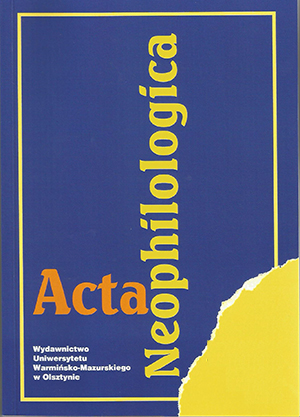
Dina Kaminskaya was a defense lawyer of Soviet dissidents and participated in the most famous political trials of the 1960s. She acted as a defense lawyer for the members of the human rights movement in the Soviet Union, the creators and disseminators of samizdat, those who organized protests and demonstrations, including the one on the Red Square in Moscow in August 1968. Leaving the USSR under the threat of arrest in 1977, in exile, she wrote a memoir, Attorney’s notes, which was published in New York by the Chronicle-Press publishing house in 1984. Not only is the Soviet political judicial system with its ideological tricks vividly represented in this book, but also the portraits of those dissidents whom she knew personally and worked for as a lawyer.
More...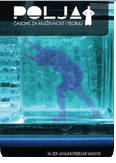
Tolstoj i Šopenhauer. Tolstojev odnos prema filozofskim sistemima. Predgovor za Odabrane misli francuskih filozofa. Uticaj estetike Šopenhauera. Poreklo i smisao epigrafa za Anu Karenjinu. Tolstoj o epigrafu. Problematika romana i njegove moralne tendencije
More...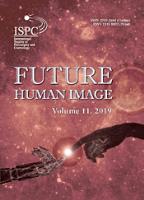
The article discusses the phenomenon of spiritual crisis as a typical attribute for each transitional era. Fiction is always sensitive to all the changes in the spiritual, ethical and philosophical components of society. Therefore, the appearance of certain motifs or plots in the works of Ukrainian and foreign modern writers, who are representing Slavic literature can serve as an indicator of the morality and spiritual health of society. Spirituality is often measured by the degree of religion. The spiritual crisis gives rise to readiness to return to sources and traditions, which for the vast majority of the European readers is Christianity. The purpose of this article is to identify the most typical motifs in modern Slavic (Ukrainian, Polish and Russian) literature, which indicate an individual spiritual search at the turn of the ages. Fiction has always been designed to influence the formation of human values. The appeal of modern writers to the problem of faith and faithlessness or belief in various non-Christian cults (esoteric, mystical, neopagan, etc. cults) in the modern world indicates that our civilization is experiencing a deep spiritual crisis and it is literature that can reflex the process of their exit. In this way, the reader rethinks the problems that humanity is facing more and more often. This is loneliness, lack of close and deep connections between people, disbelief, which causes weakness and fear of tomorrow. Thus, motifs and plots, primarily borrowed from Christian doctrine, are understood as an attempt to determine the path to mental equilibrium.
More...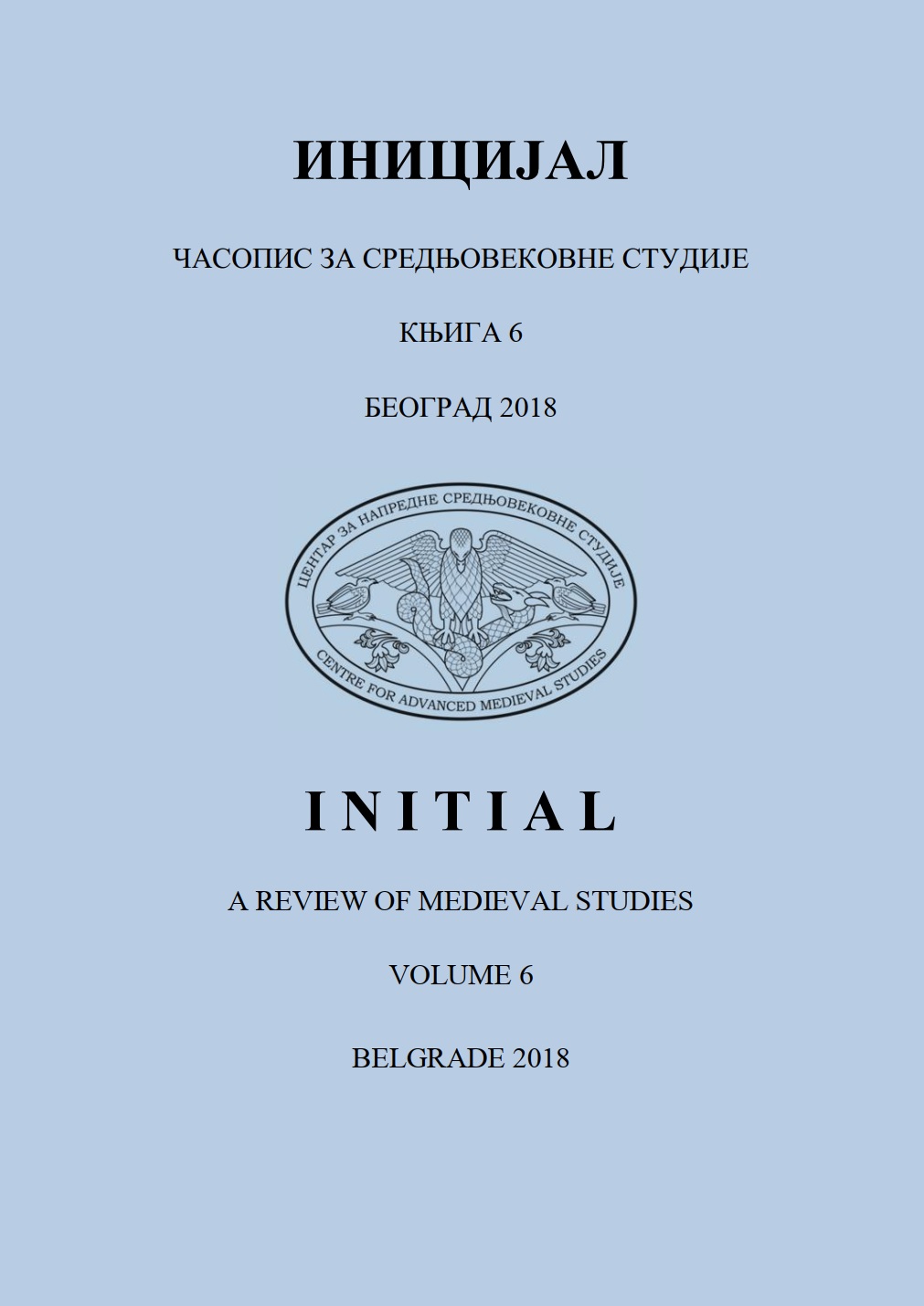
The Life of St Sava of Serbia penned by Theodosius and his Encomium on Sts Symeon and Sava reached Russia around 1420 at the latest since it is from that date on that they began to be included in Russian literary works. Both texts were contained in a manuscript which was closest to the type exemplified by the 1643 Chilandar codex no. 509, which suggests that it was brought to Russia from Mount Athos. The Encomium it contained was of the short type, albeit somewhat more complete than the one in Cod. Chil. 509. The manuscript has not survived, nor is there any known copy of it, but there is no doubt that it was much read, as evidenced by its reception in Russian literature. The earliest known use of Theodosius’s Encomium on Sts Symeon and Sava has been dated around to 1420, when the monk Epiphanius the Wise of the Trinity monastery near Moscow included a portion of it in his Encomium on Venerable Sergius. This fact allows us to make the cautious assumption that it was to this Russian monastery that Theodosius’s Life and Encomium was originally brought. The other texts whose authors made use of Theodosius might have also been written there: the prologue to the Life of St Sabbas the Sanctified and the Encomium on Sts Euthymius the Great and Sabbas the Sanctified written between 1420 and 1480. These texts made borrowings from two works of the Byzantine writer Cyril of Scythopolis and two works of the Serbian writer Theodosius, which suggests that they were written at a centre which possessed a well-equipped library. Epiphanius made use of the introductory passages of Theodosius’s Encomium in a fair manner and, with a few minor interventions, put them in the proper place in his Encomium on St Sergius. Similar was the approach of the first author of the prologue to the Life of St Sabbas the Sanctified, who borrowed almost the entire prologue from Theodosius’s Life of St Sava of Serbia, whereas a subsequent redactor of the Russian prologue made much more alterations in the texts borrowed both from Theodosius and from Cyril of Scythopolis. The redactor of the Encomium on Sts Euthymius and Sabbas the Sanctified went the farthest in changing Theodosius’s Encomium to Sts Symeon and Sava by shortening, supplementing and in other ways altering his text. A turning point in the reception of Theodosius’s work occured in the first decades of the 16th century, when the cult of St Sava of Serbia took root in Russia. Theodosius’s Life with full Encomium, which had been brought to Grand Prince Basil III from Mount Athos in 1517, began to be copied frequently, and so was his Service to St Sava which had already been known in Russia. In parallel with new transcriptions of the Life and Encomium from the 1517 protograph and their new reception in the 16th century, Russian compositions based on the manuscript of Theodosius’s Life of St Sava and Encomium on Sts Symeon and Sava which had arrived in Russia earlier (before 1420) were also copied.
More...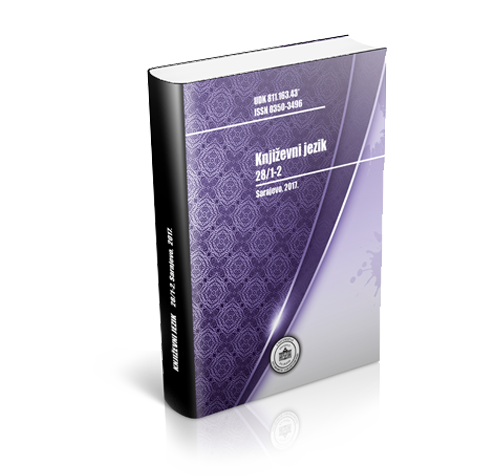
Руски епски спјев из 12. вијека »Слово о полку Игорову« бесумње je најстарије узор-дјело словенске књижевности. Послије њега Словени ће дати европској књижевности још неколико значајних прилога: »Козмину хронику« (Чеси), далматинску и дубровачку књижевност (Хрвати), Јана Кохановског (Пољаци).
More...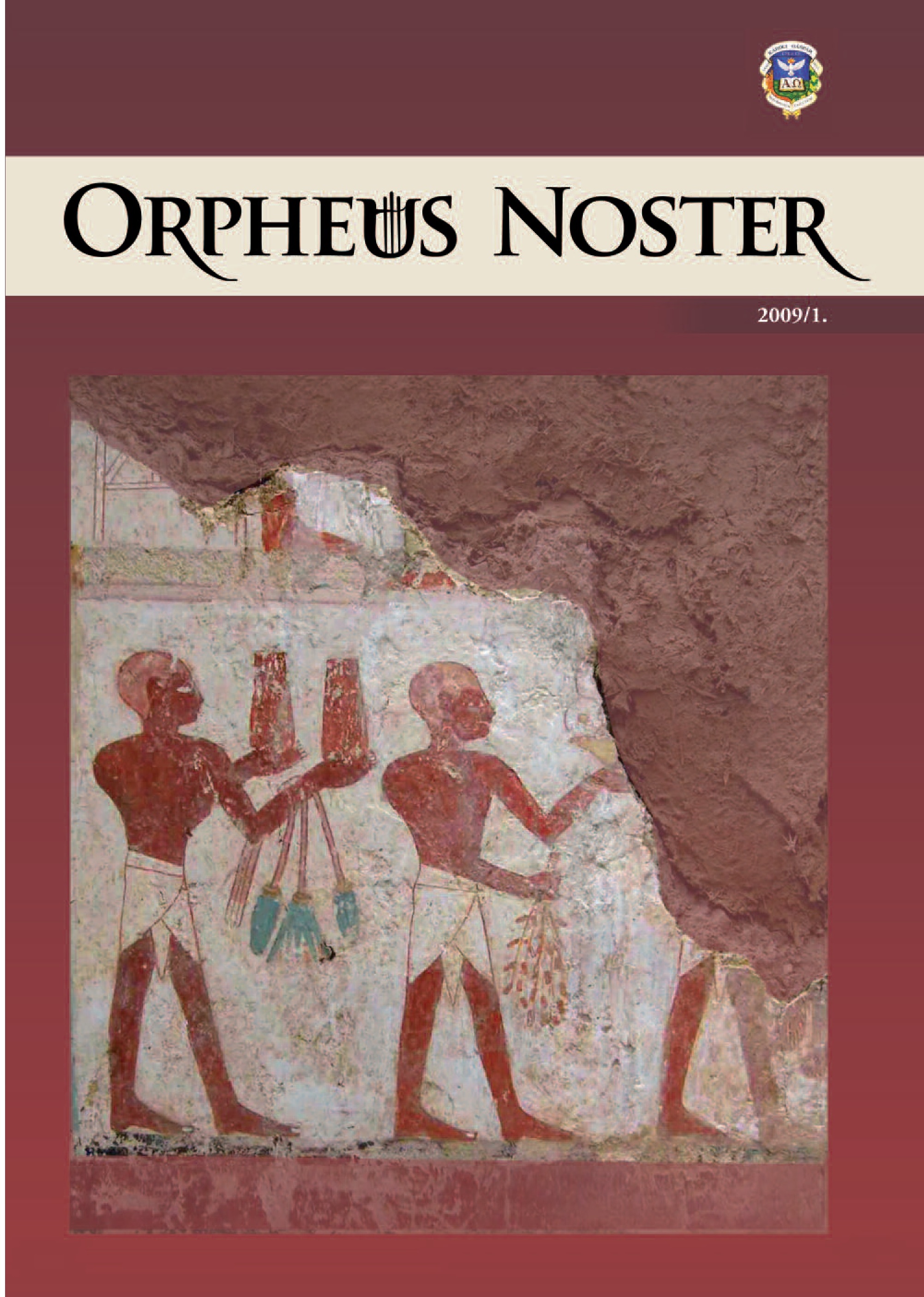
Joszif Brodszkij “Dido és Aeneas” című versét 29 évesen, három esztendővel kényszerű amerikai emigrációja előtt írta, mintegy “lelki főpróbaként” a hontalanság elfogadására. A parafrázis nyersanyagát Vergilius Aeneisének negyedik része szolgáltatta, a festmények sokaságán, Purcell operájában stb. Megjelenített szerelmi dráma, amelyben a trójai hős – épp a honvesztés állapotában – beleszeret Dido királynőbe, de hamarosan elhagyja, mert űzi az új haza – Róma – megalapításának kényszere. Joszif Brodszkij (angolul: Joseph Brodsky) Nobel-díjas orosz-amerikai költő-egyetemi tanár eredeti és új hazájában is “deáktalan”, azaz nem latinos kultúrájú ország lakója volt, mégis bízvást nevezhetjük a “leglatinosabb” huszadik századi költők egyikének. A számára legfontosabb költők sorában ott találjuk Vergilius mellett Catullust, Ovidiust és Martialist, s jellemző az is, hogy egyik kötetének igen kifejező latin címet adott: “Post aetatem nostram”. Választása, latinosságmániája nem egyszerű különcség, elitizmus volt, hanem sok versében a hanyatló Róma képeivel érzékeltette a széteső szovjet birodalom légkörét. Visszatérve jelen versére: ő, mint annyi poéta a világirodalomban, Aeneas szemszögéből láttatja a történetet. Így írta tovább az ő versét Brodszkij kiváló magyar fordítója, sok szempontból már-már alteregója, Baka István költő-műfordító is. Ezt a “férfiszempontú” olvasatot törte meg tizenegyedik verseskötetem címadó költeménye, a “Dido utolsó üzenete”, amely a szerencsétlen sorsú szerelmes asszony szemszögéből láttatja a történetet, vállalt szereplíraként. A dolgozatban amerikai klasszika-filológusok írásai mellett felhasználtam a legkiválóbb Brodszkij-szakértők, -fordítók munkáit, Kevin l. Kline-tól Zara M. Torlone-ig.
More...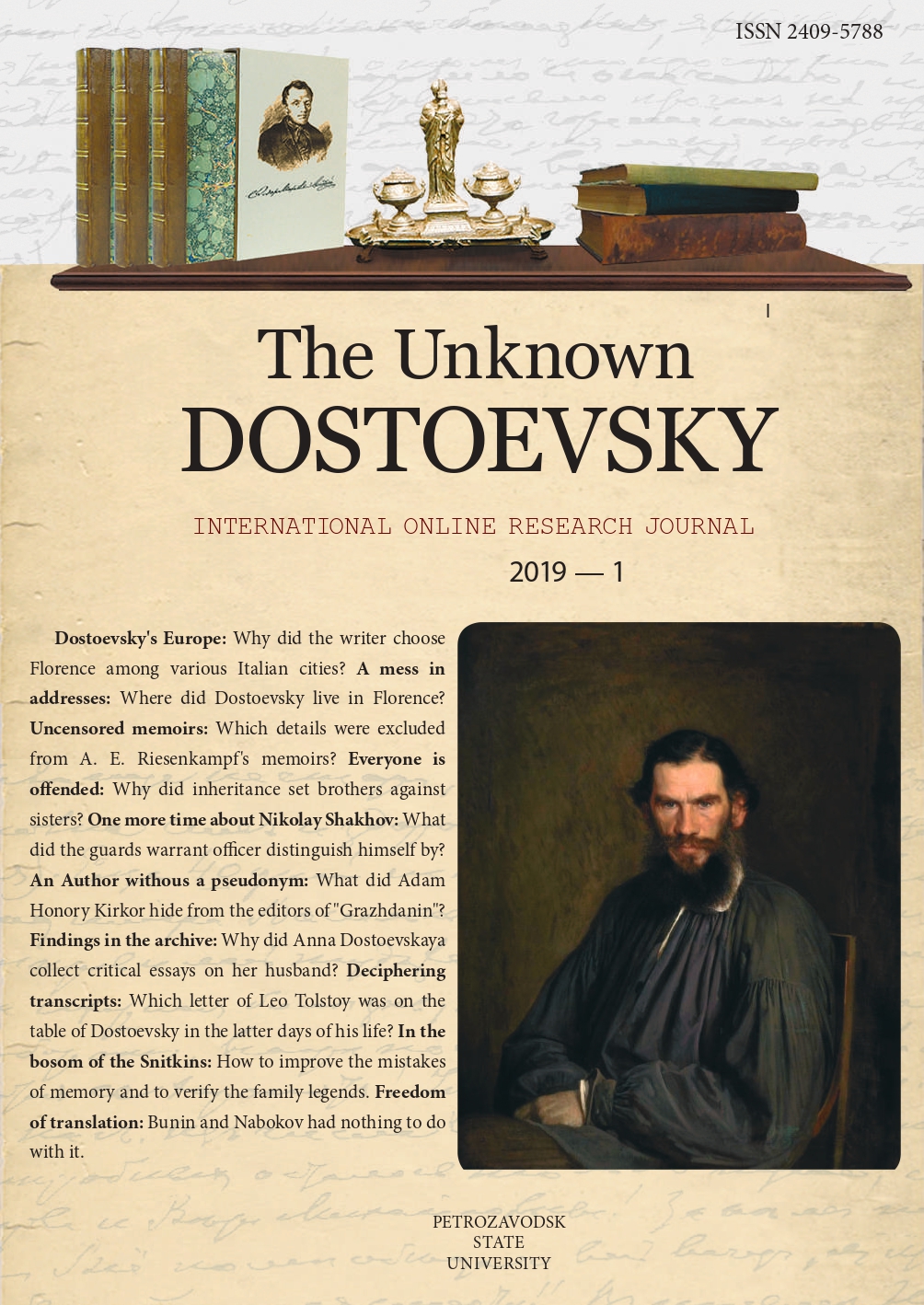
The article presents a new series of newly discovered facts about the last period that F. M. Dostoevsky spent in Florence, Italy (1868–1869). The search and study of the archives has unfolded a series of documents and maps that shed light on important and never published facts concerning the writer’s life and his literary activity, putting forwards new assumptions about the period in which his plan of a novel “Atheism” arose. To begin with, we know that the house in Guicciardini Street, where Dostoevsky lived during the first months of his last stay in Florence, has not been demolished completely, leaving its facade intact up to nowadays. Secondly, a certificate has been found: in it there is the address of another florentine house, that has never been mentioned before. Thanks to another archive discovery, the precise identification of the writer’s last address at the Mercato del Porcellino has been possible. From two parish archives, the personal notes of two Catholic priests also came to light and in them the request of a certain Russian Orthodox believer for a Mass and a Benediction is reported: in both of these cases, the addresses given by the enquiring Russian, coincide with the houses in which Dostoevsky lived at the time.
More...
The present paper deals with the phenomenon of Russian Epicurean Romanticism of the first third of the 19th century in the context of both the fundamental postulates of Epicureanism and the advanced problems of studying the phenomenon of “Russian antiquity”. The poems of K.N. Batyushkov, D.V. Davydov, A.A. Delvig, and N.M. Yazykov have been analyzed. In the course of study, we have revealed semantic tendencies of the median culture, at the structural level actualized through the genesis and evolution of Trinitarian thinking in the system of national Epicurean Romanticism as well. The ethical program of the great ancient Greek philosopher Epicurus with ideas of a dialogue between the moment and eternity, purifying / cathartic spiritual bliss leading to immortality, attainability of the ideal perfection in mortal life is the closest one to national authors. The Epicurean Romanticism anticipating the discovery of Russian anthology lyrics of the second half of the 19th century and the literary culture of the “Silver Age” first starts the process of transforming the traditional binary thinking, rejecting the canons of the World Duality in many respects and synthesizing the new knowledge in the symbol images of “dream”, “hop plant as beauty” and “beauty as hop plant”, “peace”. A complex study of the peculiarities of the relationship between the Epicurean ideals of harmony and peace and the phenomenon of irony in poetics of Russian Romanticism is among the nearest research prospects.
More...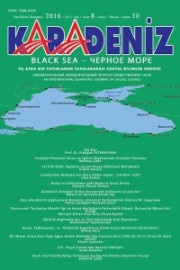
In the history of Russia there are various versions of the history of the Cossacks, its culture and language. Since the Cossacks lived in a fairly large area, they accordingly shared regionally (Don Cossacks, Tula Cossacks, Ryazan Cossacks, Astrakhan Cossacks, Kuban Cossacks, Terek Cossacks, Siberian Cossacks, etc.) and for ideological reasons scientific researches concerning Cossacks were narrowly confined and considered only within the framework of the Russian language and literature. The Cossacks for centuries lived in the steppe and down by the riversides of the Kuban, Don, Terek and Yaik rivers. Kuban Cossacks, to the present day continue to exist as part of the historical and ethno-cultural heritage of the Great Steppe. After the collapse of the Soviet Union, the Cossacks began to restore their culture, customs, traditions and try to regain historical and cultural consciousness.
More...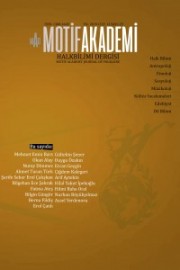
Socialist-realism is one of the modern arts and literary trends. This flow, which first appeared with the The Mother novel of Maksim Gorki in the context of artistic / literary work, was systematized in line with the decisions taken at the 1st Congress of Soviet Writers in Russia in 1934 and accepted as “official” art / literary understanding of the same country. In short, this current is explained as “the reflection of Marxism in art and literature” and it began to find an echo in the Constitutional’s last years in Turkey, at the end of the 1920s gained momentum Nazim Hikmet and has been among the dominant currents of Turkish literature until the 1980s. However, significant differences were seen between the aesthetic perception of the socialist-realist poets and writers in Turkey. As a result, more than one socialist-realism concept emerged in Turkish literature. One of the prominent among these is the aesthetic conception Attilâ Ilhan calls “social realism”. “Social realism” can be seen as a result of an effort to create an original socialist-realism theory and practice. In this article, social realism will be dealt with from the texts of Attilā Ilhan's ‘İkinci Yeni’ Savaşı and Gerçekçilik Savaşı, and basic principles will be tried to be determined on this subject.
More...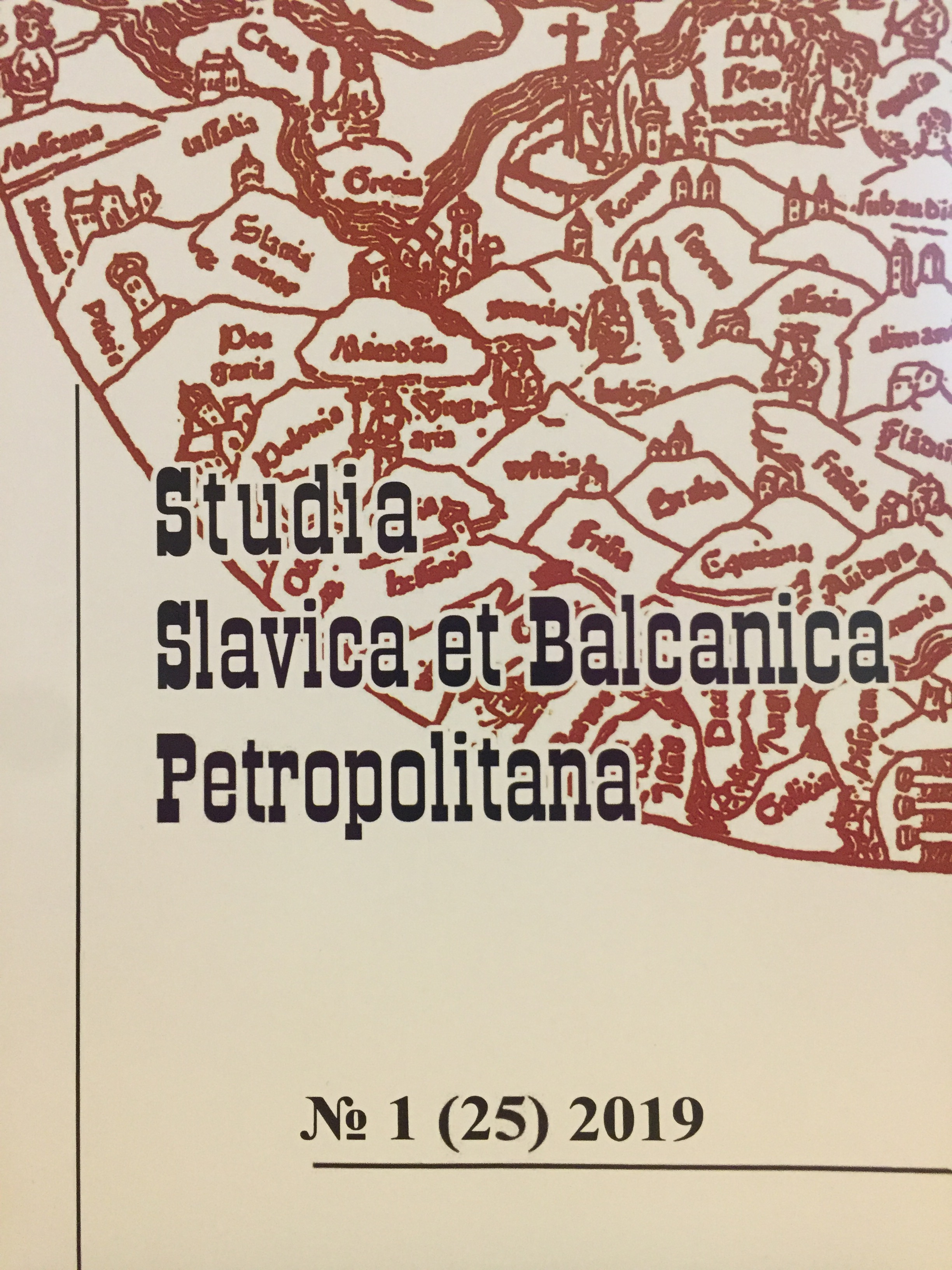
The problems raised in the article by E. A. Lyakhovitskiy “To the problem of the Old Russian writing’s typology” are discussed. The following opinions are voiced. Such script characteristics as accuracy, sloppy, simplicity, etc., do not determine the type of writing. In determining the type of Cyrillic writing, one should take into account such constitutive features as the pace of movement; “Weight” of the writing; height and proportions of letters; letters running in more than two lines, and their amount (in the middle of the line); inclination; general form of the pen movement; connectedness, etc. The graphic type of writing is determined by ideological, social and cultural attitudes, value orientations. It is possible to speak about normative, regulated, writing and about systemicwriting, deprived of regulation and any control in terms of finding the best forms for quick execution. The scheme ustav – poluustav – skoropis’ incorrectly reflects the evolution of Old Russian writing. When the skoropis’ came, ustav did not disappear. For a long time, these graphic types of writing coexisted, being distributed over various texts, depending on their purpose and language used. The polarization of the “ustav” and “poluustav” as the early (XI–XIV) and later (XV–XVII) book letters is not justified. At least until the middle of the XVI century. Books were written by script called the “ustav”. The self-value and self-sufficiency of skoropis’ writing asserted in the conditions of expansion of the pragmatic relations scope between individuals. The authority of this writing was due to the institutionalization of secular writing, the development of the bureaucratic management, the growth of professionalization of activity related to the preparation of documents, the importance of operation and credibility of the secular authorities and its administrative capacity. The factor for skoropis’ script was the understanding that the age-old, authoritative, tangible and contemplative tradition of writing could be subordinated, purposefully changed, incorporated into the writing radical innovations, and do it for rational purposes.
More...
The author discusses the classification of types of writing in the views of professional Russian scribes of the 16th–17th centuries. This classification included two basic types of professional writing: ustav or knizhnoe pis’mo (book writing) and skoropis’. There was also a certain kind of scrittura usuale termed “metnоe pis’mo” by the Russian bookmen. Ustav (“knizhnoe pis’mo”), skoropis’ and metnоe pis’mo were proper professional terms used in specialized books for calligraphers, in manuals and schoolbooks. The term “metnоe pis’mo” appears in the 1570ies – 1580ies. The terms “ustav” and “skoropis’” are attested in Western Russian documents from the 1540ies. In Muscovy the term “skoropis’” referring to the type of writing already existed by the 1570ies, but it may have appeared as early as the 1550ies. The term “ustav” is first encountered in a document dated to 1614. As far as the term “poluustav” is concerned, it is attested from the 1630ies and later. However, it did not mean a special type of writing. As may be proved by the contextual analysis, this term had different occasional usages. In the 17th century muscovite scribal milieu poluustav was a general term designating all forms of writing not properly coinciding with ustav. In some cases it meant some kind of nonconformity to the professional book writing (“knizhnoe pis’mo”) in function or in quality. In other cases it meant just writing in smaller scale in comparison to other manuscripts made in proper ustav.
More...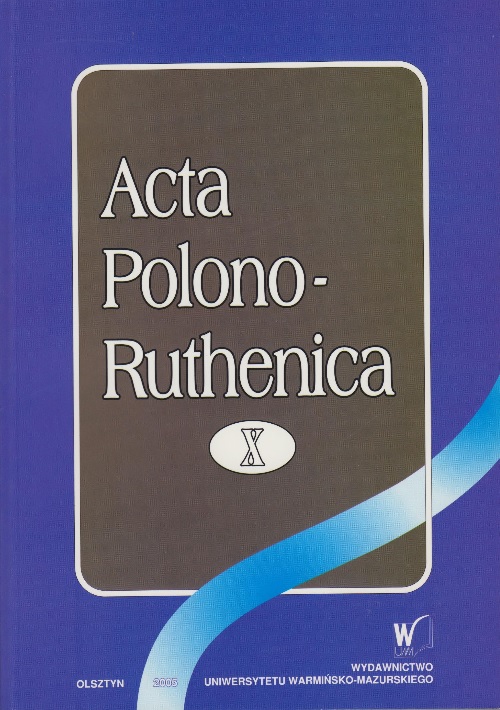
Greek philosophy fertilized European science and art. Greek culture as a cradle of, first, the Roman culture and then, the European one is a culture of values and conceptions. Values group themselves around a person, conceptions around their spiritual life. Both deter mine the sense and specificity of anthropocentrism that, ages ago, allocated man a place, the centre of the world created by him. Its value and beauty have been confronted on the basis of millenary patterns. The present work treats of universal values as a synthesis of the faith in man, from the man of ancient Greece through the present age. Presented in this way Brodski's creation is to show a person who, exiled from his homeland, not only does not cease to be the synthesis of its culture but, in fact, also becomes the synthesis of the European culture thanks to the common values, inherited after the cultural predecessors. The essence, the heart of the European culture is its set of values elaborated on throughout the centuries. If we look at Europe form this perspective, we will notice Greece expanding and swallowing up the barbarian continent. The traces of this process are to be found in all the arts performed until this day, in the development of thought, in spiritual life. Josif Brodski's poetry enveloped in itself all the best that the European culture had to offer it.
More...